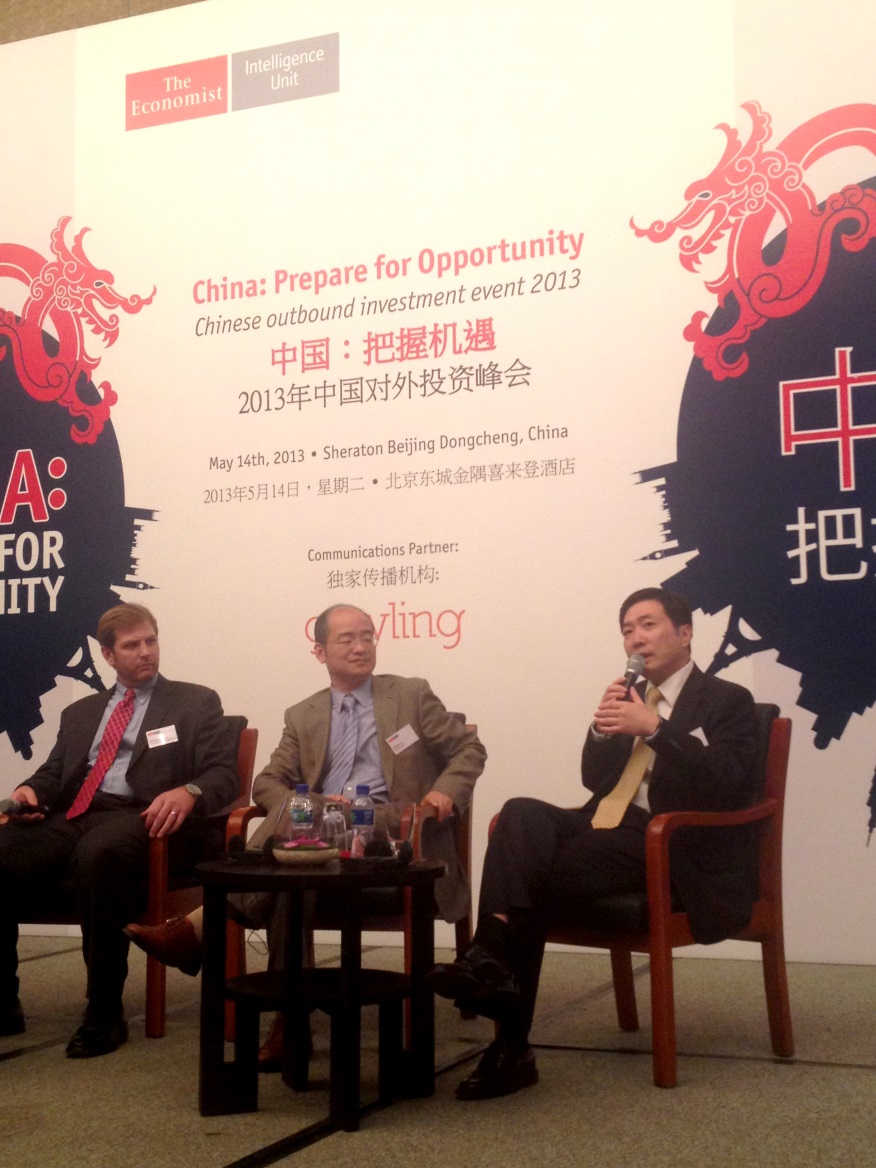Beijing, China
One of the most pressing challenges confronted by domestic enterprises and multinational companies in China is talent. Decision-makers are struggling with the speed at which wages are and will continue to rise, as well as with finding skilled labor and managing human capital risks.
CKGSB Associate Dean and Associate Professor of Strategic Management, Teng Bingsheng, offered insights on the competitive talent war in China at the conference “China: Prepare for Opportunity,” hosted by the Economist Intelligence Unit in Beijing on May 14, 2013.
In a panel entitled “Rising Wages and Finding Talent in China,” Teng first painted a picture of the growth of wages in China by differentiating blue collars from white collars. “A year ago in China,” he explained, “those making over 5,000 RMB/month were considered to be white collars; today, to be considered a white collar one has to make over 20,000 RMB/month.” He added that the highest increase in wages will be enjoyed by those with the lowest income, which is the right thing to do.” A case in point is the significant rise in wages of CKGSB’s MBA students’ upon their graduation. “Three years ago,” Teng said, “CKGSB’s MBA students on average made 280,000 RMB/year, whereas last year they earned 400,000 RMB/year. This is a 40% increase.”

To put it in context, David Humphreys—Director of Custom Research for the Americas at the Economist Intelligence Unit—said “On average, inflation-adjusted wages in the US will have risen 6% between 2005 and 2016; in China, wages will rise by 180%.”
In the talent war, private Chinese companies not only pay higher wages, but they also offer stock options to attract talent. This makes it more challenging for multinational companies competing for similar talent in China. “To succeed in this area,” Teng advised, “multinational companies must change their mentality: they need to give more responsibilities and tasks to attract Chinese employees. While this may be risky, it is necessary.”
With respect to competition in wages, William Yu—Ingersoll Rand’s Asia Pacific President of Security Technologies and Residential Solutions—explained that “employees are seeking more than wages and professional training in their employers. They are looking for fairness and the right career path.” In addition, a company’s growth is very important in attracting and retaining talent.
Has productivity risen with the increase in wages? Teng points to Ernst & Young’s recent report on productivity in China that leads to an important finding—there is a significant gap in productivity in China. “Chinese companies are catching up in productivity, because they are realizing they cannot rely only on cheap labor,” says Teng. “As a result, they are combining innovation, technology and labor to achieve higher efficiency.” In addition, Teng explained that companies are creating innovative ways of increasing productivity, such as by splitting one factory into three.
Are Chinese firms expanding diversity and valuing female leadership? Yes, some enterprises are doing so very successfully. Teng pointed to Wahaha as an example. “This company has many female leaders, because the owner believes female employees are ultimately more loyal and stable if you treat them well.” Teng’s advice? “A company has to offer female managers something different, for example flexibility in work-life balance.”